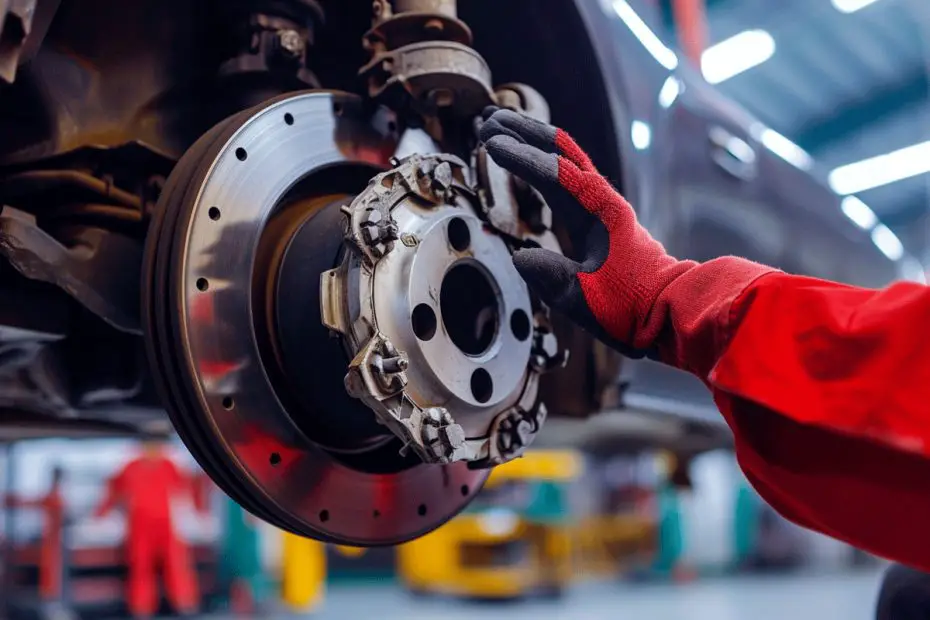Ever experienced that unsettling clunking or popping sound from your car as you cruise down the road? I know I have, and it’s never a noise you want to ignore. These sounds can be the first signs that something’s amiss with your vehicle’s suspension system.
Diagnosing suspension noises can be tricky, but I’m here to break it down for you. Whether it’s a clunk when you hit a bump or a pop as you turn, understanding the possible causes is crucial for a smooth and safe ride.
Stay tuned as I dive into the common culprits behind these unnerving suspension noises. I’ll help you pinpoint the issue and get you back to enjoying your drive, noise-free.
Clunking Sound from Suspension: Possible Causes
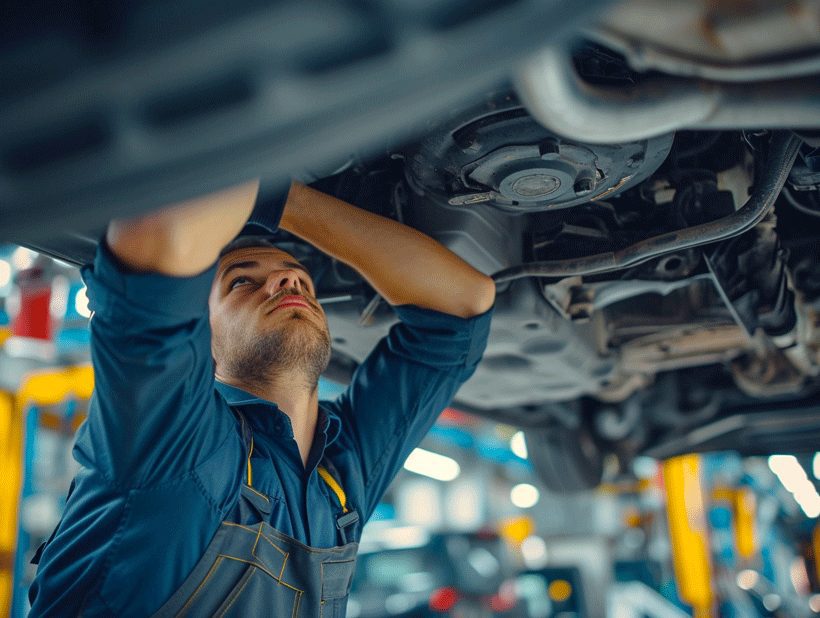
When I’m out and about on the road, a clunking noise coming from my car’s suspension is one of the last things I want to hear. It’s a clear sign something isn’t quite right. It could be a minor issue or a warning of a major repair need. After years of dealing with cars, I’ve come to identify several common causes:
- Worn out shock absorbers: Shock absorbers take a beating over time. Once they wear down, they can start to make a clunking noise with every bump or pothole.
- Damaged struts: Similar to shocks, the struts are crucial for a smooth ride. If they’re damaged, I know I might hear a clunking sound, especially when I’m turning or going over bumps.
- Loose suspension components: Over time, parts like control arms, sway bars, and ball joints can become loose. This looseness often leads to clunking sounds because the components aren’t as tight as they should be.
- Bushings that have deteriorated: Bushings serve as cushions between parts. When they wear out, metal-on-metal contact can occur, creating a distinct clunking noise.
- Bad tie rods: The tie rods connect the steering system to the wheels. Any play or damage in these rods can lead to a clunking sound, especially during steering.
Here’s a rundown of these potential causes quantified:
| Cause | Frequency of Occurrence |
|---|---|
| Worn Shock Absorbers | High |
| Damaged Struts | Moderate |
| Loose Suspension Components | Moderate to High |
| Deteriorated Bushings | High |
| Bad Tie Rods | Moderate |
Aside from these, there could be other culprits such as issues with the wheel bearings or even the tires themselves being unevenly worn or not balanced correctly. Understanding the nuances of these problems can be tricky, but it’s crucial to address them before they aggravate.
It’s worth noting that the weight of my car plays a role in how quickly suspension parts can wear down. Heavier vehicles might see some of these issues arise sooner than lighter ones. Also, my driving habits and the typical roads I travel on can stress the suspension system in different ways.
Popping Sound from Suspension: Possible Causes
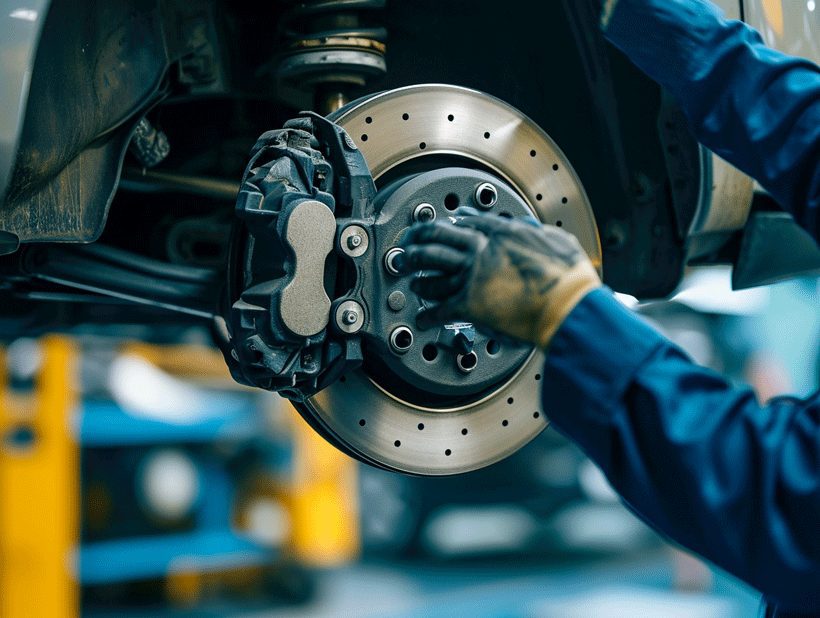
When I‚Äôm diagnosing a popping noise in a car’s suspension, I consider a range of components that might be the culprit. It’s not uncommon for these issues to be subtle, yet they can lead to more significant problems if not addressed promptly.
- Worn Ball Joints: These pivotal components connect the control arms to the steering knuckles and, when worn, can cause a distinct popping sound during turns or when driving over bumps.
- Control Arm Bushings: If the bushings that cushion the control arm connections are worn out, it can lead to metal-on-metal contact, which manifests as a popping noise.
- Stabilizer Links and Bushings: These parts of the sway bar system can deteriorate, causing a popping sound when the vehicle navigates turns or uneven roads.
The subtlety of diagnosing these issues comes from the fact that they may only produce noise under certain conditions, like when accelerating, braking, or cornering. To accurately pinpoint the problem, it’s crucial to replicate the noise consistently and observe under what circumstances it occurs.
Here’s a brief example of common culprits behind suspension pops:
| Suspension Component | Likely Symptom |
|---|---|
| Worn Ball Joints | Popping during turns or bumps |
| Worn Bushings | Clunking or popping at low speeds |
| Faulty Struts | Popping when braking |
| Damaged Springs | Metallic popping over bumps |
I also inspect the strut mounts and springs, as these can sometimes break or become dislodged, resulting in a popping or snapping sound. It’s important to note that the precise symptoms can vary depending on the vehicle’s design and the specific parts affected.
In my experience, addressing popping noises early can prevent additional damage to the suspension and other vehicle components. Regular maintenance and checks play a pivotal role in catching these issues before they escalate. If you’re hearing odd noises from your suspension, it’s wise to have a professional take a look sooner rather than later. They will conduct a thorough inspection and can often spot problems that may be overlooked by the untrained eye.
Remember, a vehicle’s handling and safety are directly linked to the integrity of the suspension system, so keep an ear out for unusual sounds and seek professional advice when necessary.
Signs and Symptoms of Suspension Issues
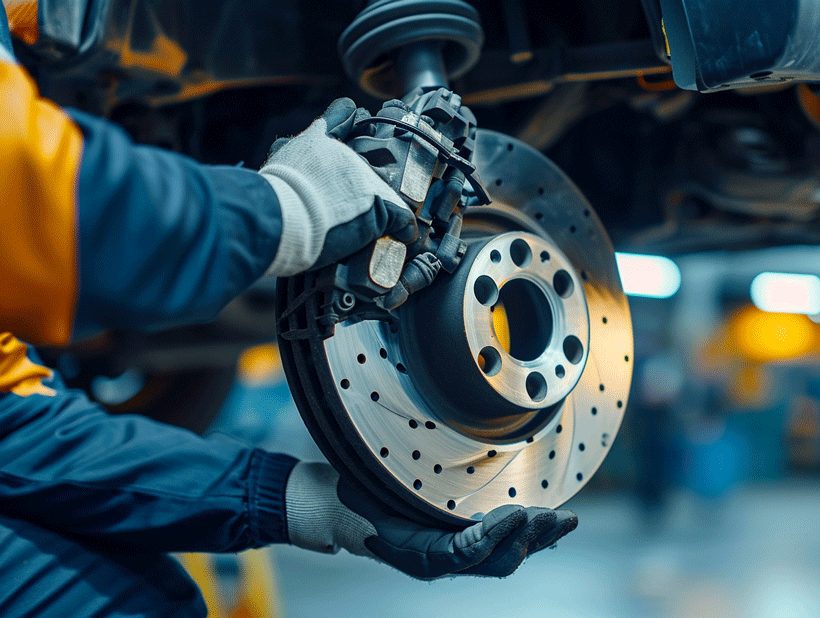
When I’m investigating clunking and popping sounds in a car’s suspension, I look for specific signs that point towards underlying issues. It’s crucial to be aware of these symptoms as they’re often the first indicators of a problem.
- Unusual Noises: Aside from the clunking and popping sounds when turning or hitting bumps, you might also hear creaking or groaning noises. These often manifest when the vehicle is going through changes in direction or speed.
- Uneven Tire Wear: If the suspension is failing, it can lead to uneven tire wear. This is because the vehicle’s alignment is directly affected by the suspension’s condition.
- Poor Handling: You may notice that your car doesn’t handle corners as well as it used to or seems less stable on the road.
- Visible Damage or Leaks: Physical inspection can sometimes reveal broken, bent, or leaking parts in the suspension system.
- Excessive Vibration: A worn suspension can cause the car to vibrate more, especially at higher speeds.
Handling and Steering Feedback
The suspension is what connects the vehicle to its wheels, and it plays a significant role in providing feedback from the road. Any disruption in the suspension system can hamper this feedback loop.
- A loose steering feel or a steering wheel that’s off-center can hint at suspension troubles.
- Difficulty in steering, especially during turns, suggests potential issues with the suspension linkage.
Diagnostic Techniques
A professional mechanic will utilize various diagnostic techniques to pinpoint the cause of suspension noises and issues. These might include a road test, physical inspection, or using specialized diagnostic equipment.
- Road Test: The mechanic will listen for noises and assess how the vehicle handles.
- Physical Inspection: This involves checking for wear or damage to suspension components.
- Diagnostic Equipment: Tools like wheel alignment machines help in further analyzing the vehicle’s condition.
Identifying the key symptoms of suspension problems and seeking early intervention is paramount in maintaining your car’s integrity and performance. Regular checks and a keen ear can save you from costlier repairs down the line. Remember, a healthy suspension system is fundamental to a smooth and safe driving experience.
How to Diagnose Suspension Noises
When I’m faced with a problematic clunk or pop coming from my car’s underbelly, the first thing I do is isolate the source. I’ve learned that zeroing in on where the noise originates is key to understanding the root problem. I‚Äôll guide you through the process, ensuring that you‚Äôll be able to identify where those unsettling sounds are coming from.

I start with a Visual Inspection. This involves checking for any obvious signs of wear or damage to the suspension components. I look for:
- Broken or displaced springs
- Damaged shock absorbers
- Loose bolts or other hardware
Next, I perform what’s known as the Bounce Test. By applying weight to each corner of the car and releasing, I observe how the suspension responds. An excessive bounce could be a telltale sign of shock or strut failure.
Another technique I use is Listening Closely During a Test Drive. Specific sounds occur under particular circumstances, such as during acceleration, turning, or when braking. By paying close attention, I can often pinpoint whether the noise is more likely to be, say, a control arm bushing rather than a stabilizer link.
For more data-driven insights, I recommend using a Suspension Diagnostic Tool. Some of these tools are designed to analyze vibrations and sounds, which can help identify not just the general area, but even the specific component causing trouble. This kind of precise diagnosis can save time and money during the repair process.
I also check for Uneven Tire Wear which often suggests issues with the alignment or suspension. This can be easily overlooked, but it‚Äôs a clear indicator that something isn’t right.
Finally, a Professional Mechanic’s Evaluation is sometimes necessary to correctly diagnose the problem. Their experience often allows them to identify issues that I might miss. After narrowing down the potential causes, getting a professional on board provides an added layer of confidence in the accuracy of the diagnosis.
Remember, early detection of suspension issues is key to preventing more serious damage to your vehicle. By learning to recognize and diagnose these common noises, you‚Äôll be better prepared to take timely action and extend the life of your car’s suspension system.
Steps to Fix Clunking and Popping Sounds in the Suspension
Addressing clunking and popping sounds in a vehicle’s suspension system requires a methodical approach. I’ll walk you through the key steps necessary to identify and fix these disconcerting noises, ensuring your drive remains smooth and safe.
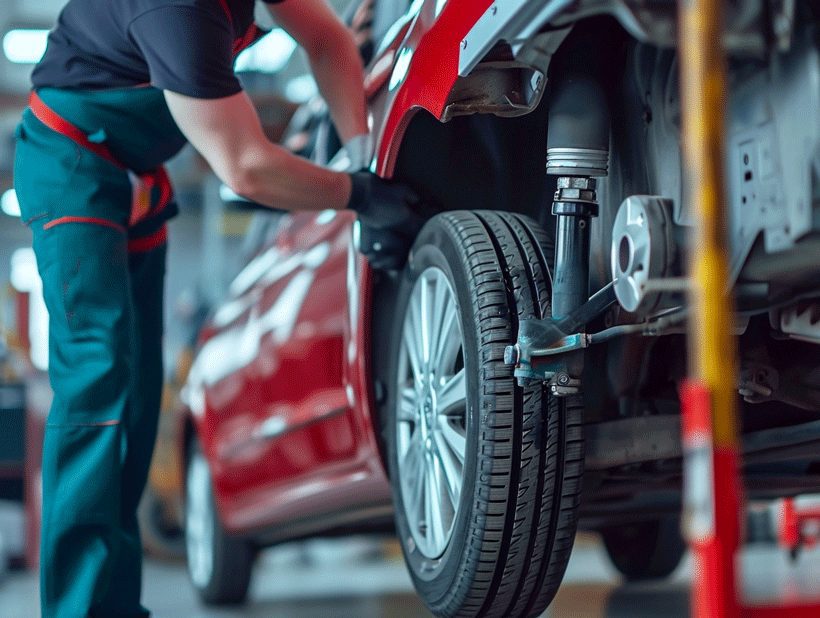
Conduct a Thorough Inspection
Start with a meticulous visual check to spot any obvious signs of wear or damage. Look for:
- Cracks or breaks in suspension components
- Signs of fluid leakage around shocks or struts
- Excessive rust on metal parts
Replace Worn Components
Based on your inspection findings, here’s what might need replacing:
- Ball Joints: If there’s any play or looseness, these are prime candidates for replacement.
- Bushings: Cracked or worn bushings can be the culprit and should be swapped out.
- Stabilizer Links: Any sign of visible wear or damage mandates a change.
Tighten Loose Parts
Sometimes, noise originates from components that have simply become loose over time. Ensure that all nuts and bolts are properly fastened, applying the correct torque as specified in the vehicle’s service manual.
Lubricate Moving Parts
At times, applying a suitable lubricant to suspension joints can alleviate noise. However, ensure that this is appropriate for the parts in question, as some components are designed to remain dry.
Align and Balance Wheels
Improper wheel alignment and balance can exacerbate suspension noises. After any repair or replacement work, it’s essential to:
- Have your wheels aligned by a professional.
- Check tire balance to prevent irregular wear and vibrations.
While performing these steps, I keep a detailed record of all observed issues and actions taken. This aids in tracking the vehicle’s maintenance history and assists me in noticing any recurring problems. Regular maintenance and prompt attention to unusual noises help safeguard the suspension system, contributing to the longevity and performance of the vehicle.
Conclusion
Tackling suspension noises promptly is key to maintaining your vehicle’s health. By following the steps I’ve outlined, you can diagnose issues like clunking and popping sounds with confidence. Remember, it’s not just about fixing the noise‚Äîit’s about preserving your car’s suspension system for a smoother, safer ride. Keep up with regular check-ups and don’t hesitate to consult a pro when in doubt. Stay tuned to your car’s needs and you’ll be set for miles of trouble-free driving.
